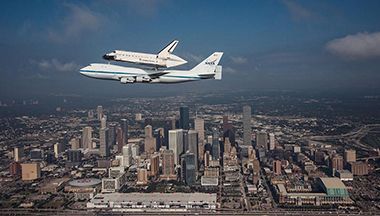Houston Facts & Figures

Houston's heat and humidity made air-conditioning an essential element in Houston's early survival, and it continues to be important in day-to-day life. Most workers are relatively unaffected by the heat since they spend the hottest part of the day indoors in air conditioning. Air conditioning is considered the stimulus for the growth of Houston in 1950 when it became the most air-conditioned city in the world.
On June 29, 2013, the temperature reached 107 in Houston, making it the highest temperature ever recorded in June.

Houston was founded on August 30, 1836 by brothers Augustus Chapman Allen and John Kirby Allen on land near the banks of Buffalo Bayou.
Houston is the fourth most populous city in the nation (trailing only New York, Los Angeles and Chicago), and is the largest in the southern U.S. and Texas.
The Houston-Galveston-Brazoria Consolidated Metropolitan Statistical Area (Houston CMSA) consists of eight counties: Brazoria, Chambers, Fort Bend, Galveston, Harris, Liberty, Montgomery and Waller
The Houston CMSA covers 8,778 square miles, an area slightly smaller than Massachusetts but larger than New Jersey.
Founded in 1836, the City of Houston has a 2010 population of 2.1 million, according to the U.S. Census Bureau -- www.census.gov. Houston's population in 1850 was listed as 2,396.
The metro area's population of 5.95 million in 2010 is 6th largest among U.S. metropolitan statistical areas, according to www.census.gov, and a 26% increase since 2000.
Harris County's population is 4,092,459.
Houston's latitude is 29 degrees 45 minutes north and its longitude is 95 degrees 22 minutes west
Houston is 43 feet above sea level
The three-airport system served 49.5 million passengers in 2010, including over seven million international travelers.
If Houston were an independent nation, it would rank as the world's 30th largest economy
The Third Quarter 2010 ACCRA Cost of Living Index shows that Houston's overall after-taxes living costs are 9% below the nationwide average, largely due to housing costs that are 21% below the average.
Houstonians eat out more than residents of any other city. While here you can choose to indulge in one of the more than 11,000 restaurants ranging from award-winning and upscale to memorable deli shops.
Houston has a Theater District second only to New York City with its concentration of seats in one geographic area. Located downtown, the 17-block Theater District is home to eight performing arts organizations with more than 12,000 seats.
Houston has a unique museum district offering a range of museums, galleries, art and cultural institutions, including the City's major museums.
Houston has more than 500 cultural, visual and performing arts organizations, 90 of which are devoted to multicultural and minority arts and is one of five U.S. cities that offer year-round resident companies in all major performing arts
More than 90 languages are spoken throughout the Houston area.
92 countries have consular offices in Houston, the third highest in the nation
Houston has professional teams representing football, baseball, mens basketball, soccer, and AHL hockey.
Houston is home to the Houston Livestock Show and Rodeo. The world’s largest livestock show and rodeo attracts more than 2.2 million visitors each year.
Houston has among the youngest populations in the nation. The city has the third-largest Hispanic and third-largest Mexican population in the United States
Houston boasts more than 40 colleges, university and institutions - offering higher education options to suit all interests.
Houston is home to the Texas Medical Center, the largest medical center in the world, with a local economic impact of $10 billion. More than 52,000 people work within its facilities, which encompass 21 million square feet. Altogether 4.8 million patients visit them each year.
The Houston-Sugar Land-Baytown MSA's Gross Area Product (GAP) in 2006 was $325.5 billion, slightly larger than Austria's, Poland's or Saudi Arabia's Gross Domestic Product (GDP).
When comparing Houston's economy to a national economy, only 21 countries other than the United States have a gross domestic product exceeding Houston's regional gross area product.
Houston ranks second in employment growth rate and fourth in nominal employment growth among the 10 most populous metro areas in the U.S. In 2006, the Houston metropolitan area ranked first in Texas and third in the U.S. within the category of "Best Places for Business and Careers" by Forbes magazine.
Home to and more than 5,000 energy related firms, Houston is considered by many as the Energy Capital of the world.
Houston's economy has a broad industrial base in the energy, aeronautics, and technology industries: only New York City is home to more Fortune 500 headquarters.
23 Fortune 500 companies are headquartered in Houston
Of the world’s largest non-U.S. Corporations, 63 have a presence in Houston.
The Port of Houston ranks first in the United States in international waterborne tonnage handled and second in total cargo tonnage handled. It is the tenth largest port in the world. The Port handled 220 million short tons of domestic and foreign cargo in 2010.